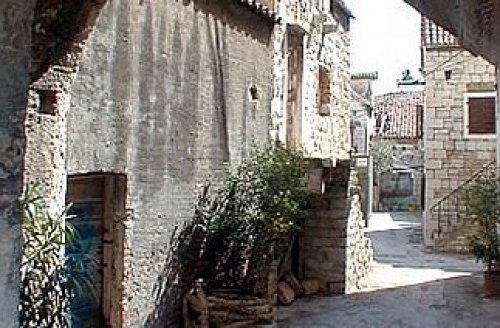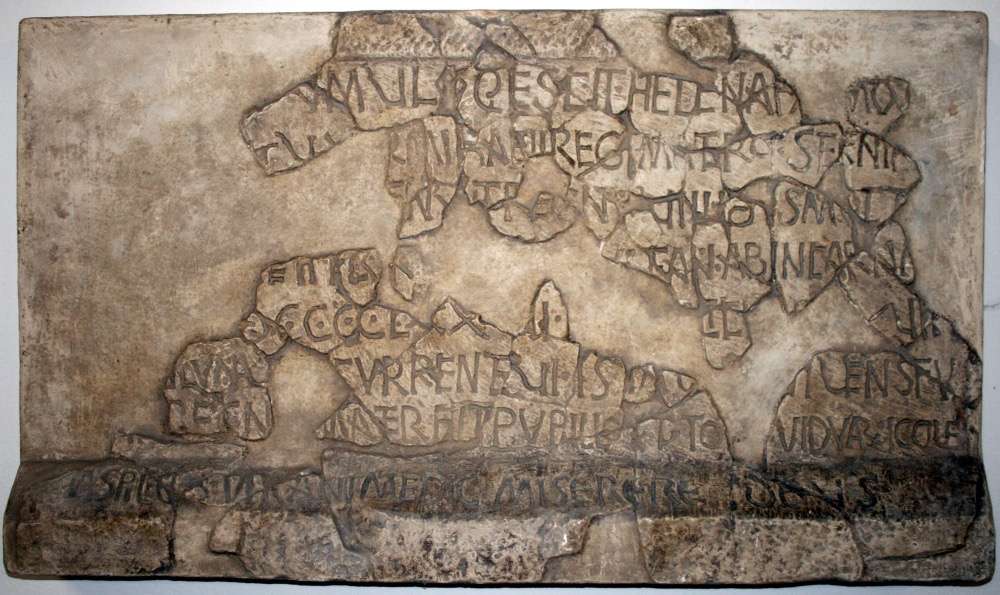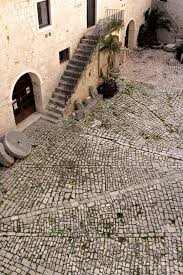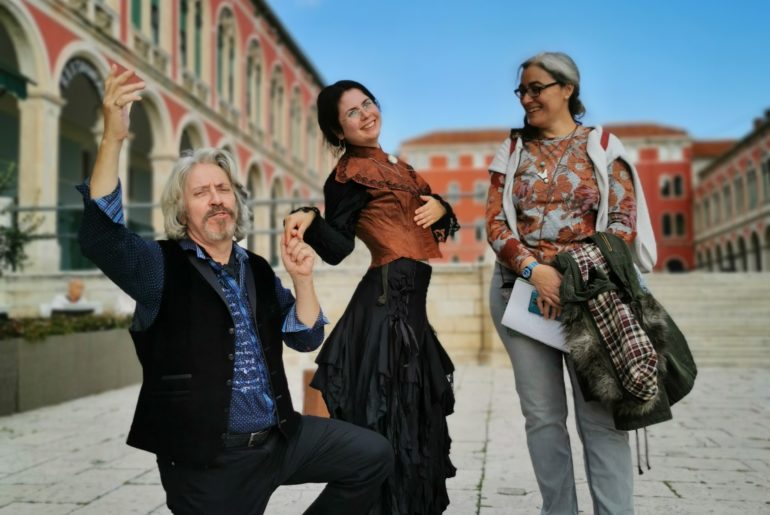This post is also available in: Croatian
Expounding tours of Kaštela, Solin, and Trogir
Kaštela, Solin, and Trogir are small towns in the vicinity of Split. Expounding tours within the Dalmatia Storytelling Project revive the chequered past of Dalmatia, its turbulent history, adventures of the nobility, and a beautiful love story. Kaštela was ravaged by the Turks, to which many remains of buildings bear witness, but is nowadays known for its first-class olive oil and wine. Solin has a different history: It is proud of its royal love story and boasting its beautiful basilicas. “Little Venice” proudly tells the story of a noble family who left their love in Trogir.

Expounding tour Roots of Dalmatia
Kaštela, a place near Split, is known for its turbulent history and its extra virgin olive oil that is genuine liquid gold, and its top wines, the most famous of which is Crljenak Kaštelanski or Zinfandel. Expounding tour Roots of Dalmatia familiarises with the way of life in Kaštela between the 5th and the 21st century, long past hallmarked by struggles, survival, and outstanding courage of local inhabitants. This region was exposed to attacks by Turkish and other invaders, as evidenced by the remains of towers, forts, and citadels.
The history of Kaštela was marked by two Croatian noble families Ćipiko and Stafileo, who built fortifications, thus defending their place in numerous defensive actions and the Venetian-Turkish wars. They were mainly landowners, merchants, and sailors who invested their funds into chapels, works of defense, and farm buildings. Peasants and farmers of Kaštela earned their livelihood by growing fruits, vegetables, and cereals and processing olives and grapes. Many former customs have vanished into oblivion, yet wine and olive oil are still part of the tradition. Taking a walk, visitors will learn about the historical development, which has made a dent in today’s life of Kaštela and Dalmatia and enjoy the extra virgin olive oil.

Royal stories from Solin
With the help of the governor of Zadar, ban Pribin, the young king Mihajlo Krešimir II of the Trpimirović lineage won the civil war against his brother Miroslav and was in 949 anointed king. The following year, he cemented his alliance with the governor by providing a grant to the Zadar monastery of St Chrysogonus. There he was hit by Cupid’s arrow and fell in love at first sight with a young Jelena from an aristocratic family of Madijevci.

They got married and ruled from the then royal city of Solin. They had a son Stjepan Držislav, who was to inherit his father’s crown. However, King Mihajlo died in a battle while Stjepan Držislav was still a minor, so mother Jelena took over the reign as regent in her son’s name. During her short reign, two churches were built on the river island in Solin – the coronation basilica of St. Mary and the burial basilica of St. Stephen. King Mihajlo was buried in the St. Stephen Church, where Jelena also found eternal rest next to him in the church vestibule – the so-called Mausoleum of Croatian Kings.

On the queen’s sarcophagus, there is an epitaph testifying the genealogy of Croatian kings of the early Middle Ages: “In this grave lies the famous Jelena, wife of king Mihajlo, mother of king Stjepan. She brought peace to the kingdom…”

Expounding walk through the palace of the Garagnin-Fanfogna family
One of the names of the 3000 years old Trogir is “Little Venice,” as it bears a remarkable resemblance to the beautiful Italian city of art. Being the most influential noble family of Trogir in the 18th and 19th century, the Garagnin–Fanfogna family originated in Venice and arrived in Trogir in the 16th century, when in the city center, a beautiful palace was built for them. In the 18th and 19th century the Garagnin family played an important role in maritime affairs, trade, and the overall economic and cultural life in Trogir and Split. Catherine (Katarina) Fanfogna-Garagnin was the last descendant of this influential noble family and the first woman in this region to keep her maiden name Garagnin and add it to her husband’s name. An expounding walk takes visitors through the late Baroque palace, a venue of the Trogir noble elite, which was built in the 18th century by the Garagnini to the plans of Ignacije Macanović.
Catherine’s father, Ivan Luka Garagnin, a forward-thinking erudite, was the first conservator in Dalmatia. Visitors can learn about the culture of enjoying food in the family dining room, so-called tinel. At the same time, the most impressive part of the palace is the family library, which is with more than 5,000 books, the largest in this region. It was founded by Ivan Luka Garagnin – Bishop of Rab and Archbishop of Split. It was also visited by the Austrian Emperor Franz Joseph. In addition to the valuable holding of books, it also contains all issues of the Royal Dalmatian (Kraljveski Dalmatin), which was the first newspaper in the Croatian language. After Catherine’s marriage to Antun Fanfogna, the palace became Garagnin-Fanfogna. Unfortunately, the palace was devastated after the Second World War, but the family library has been preserved. Today, the palace houses the Trogir City Museum, which is indeed worth a visit

DALMATIA – STORYTELLING DESTINATION
Revival of storytelling in museums and institutions to preserving cultural heritage is a unique project in Croatia and Europe. In Dalmatia, as a storytelling destination, 14 characters of the area’s rich heritage have been revived. Revival of heritage characters in museums and heritage institutions is a unique project in Croatia and Europe, reviving 14 heritage characters. In addition to this project, 23 themed tours have been created. This project, intended for tourists and the local population, is focused on providing authentic experiences of cultural heritage through storytelling. These commercial guided tours will be available through the County’s storytelling platform that offers storytelling tours led by knowledgeable and certified guides wearing costumes. The project aims to preserve and publicize Dalmatian cultural heritage and create attractive 365 tourist offers in Splitsko–Dalmatinska County.
Storytellers:
Roots of Dalmatia – Ana Ivica Jakić
Royal stories from Solin – Vedrana Memiš
Expounding walk through the palace of the Garagnin-Fanfogna family – Doris Čavka
This post is also available in: Croatian
